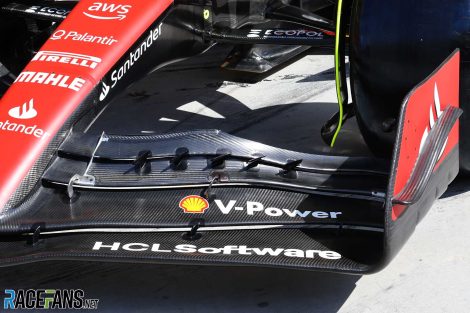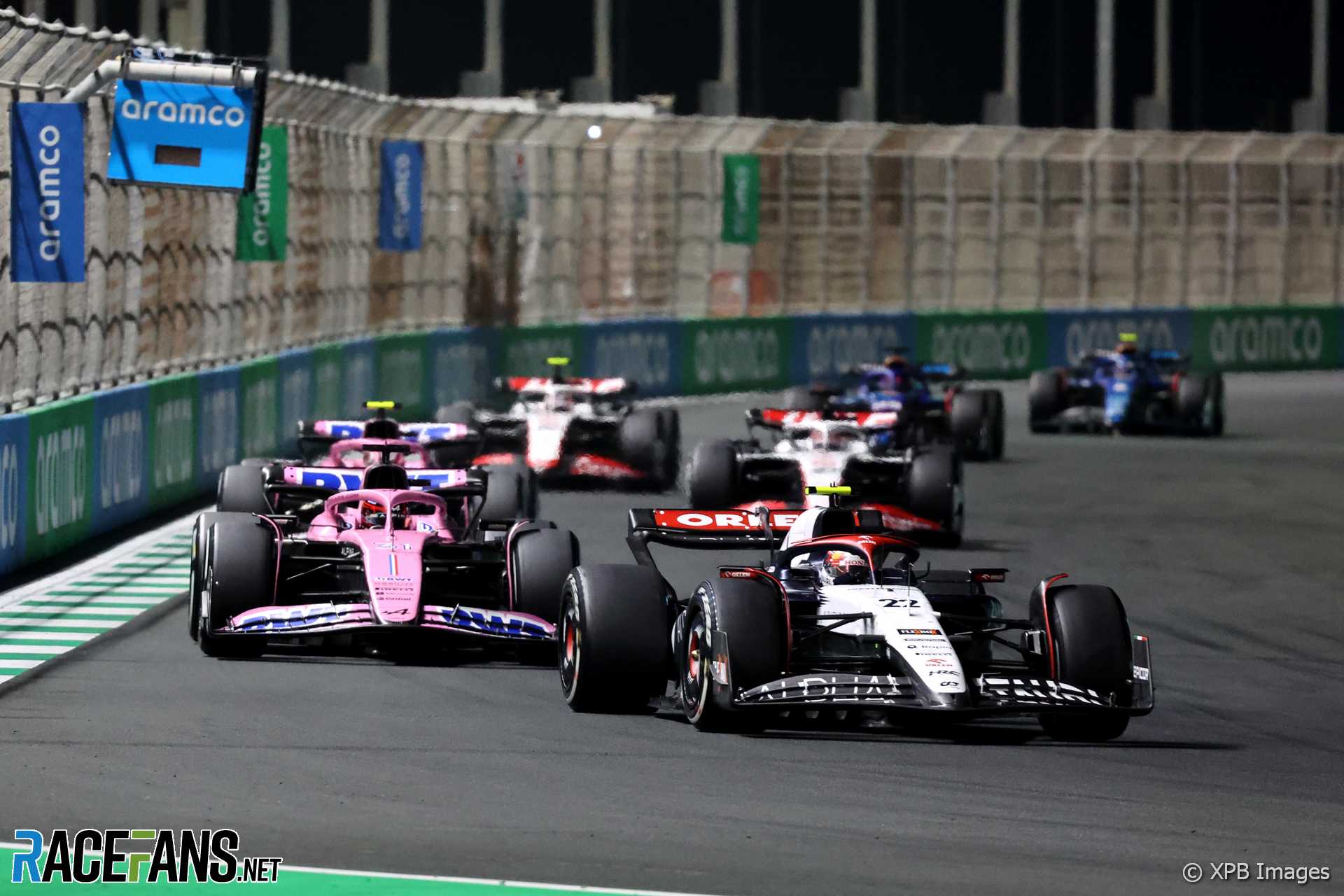Formula 1 cars have not become worse at following each other closely this year, the series’ technical director Pat Symonds believes.
Some drivers have suggested overtaking has become more difficult in the second season since F1 introduced heavily revised regulations designed to aid passing.However Symonds told the official F1 channel that their analysis indicates this is not the case. “I’m not sure,” he said. “Our statistics of how close the cars are following don’t appear to have changed much.
“We’ve only had two samples so far so it’s a little bit difficult to tell. But it’s certainly something that we and the FIA will keep monitoring and we’ll have a look.”
The 2022 technical regulations cut back the upper surface aerodynamics of the cars and allowed teams to make greater use of ground effect to generate downforce and produce fast lap times. Key areas of the car’s design have been tightly restricted to condition the airflow which is produced and allow other cars to follow more closely.
Symonds said he has seen few changes on this year’s cars which have altered that. “I talk to my aerodynamic colleagues in the FIA, we haven’t seen anything in the cars that really makes us think that things have fundamentally changed,” he said.
“So at the moment, a watching brief – nothing to be terribly concerned about. I guess that we always expected the cars would evolve to be slightly worse rather than slightly better in this respect.”
Advert | Become a RaceFans supporter and
He is convinced F1 cars can still follow more closely than they could in the final season of the previous rules set. “We had such a margin between ’21 and ’22 in terms of close following capability that even if we’ve lost a little bit of it, we’re still way, way better than we would have been had we not done anything.”

“This is the way they find performance, to try and reintroduce that out-wash,” he said. “There was a little bit of a change in the nuance of the wording of what you can do with the flap gap separators. People are using that a little bit to push things out.
“But as I said earlier, at the moment, I don’t think we’ve got any real concerns on this. I think we’ve got to keep watching it. We’ve got to make sure that nothing really goes awry.
“Just as there was a little bit of rewording on the separators also there was some rewording on the wing endplates themselves which were was designed to stop some of the out-washing that was beginning to occur in some of the vanes.
“So we’re just going to keep on these things. It’s the team’s jobs to develop their cars to get the aerodynamics better and we don’t want to stop that, all we want to do is make sure we get good racing.”
Advert | Become a RaceFans supporter and
However, Symonds admitted there is still scope for improvement and he expects the next generation of technical rules, currently planned for introduction in 2026, to further improve how closely cars can follow.
“This work now has been passed on to the FIA, so we don’t get directly involved in determining how that that work is done and what’s done on a particular week, et cetera. But it is a balance between ensuring that there’s a good understanding of the current cars and balancing that against the quite considerable amount of work that still needs doing on the 2026 car.
“We started on the 2026 car a few years ago so it’s not as if it’s a rush to get it done, but it is quite a different configuration. It’s a much more efficient aerodynamics by using the sort of active aspect of the aerodynamics.”
He believes there is scope to make more progress on improving how closely cars can follow each other. “Perhaps more importantly, I think that we learned a lot of lessons from doing the 2022 car about the wake, about the effects of the wake on the cars, about what we needed to do to promote the close following.
“But it was definitely work in progress. At the point we had to release regulations and allow the guys to go out and design their cars there was still an awful lot more to do.
“A lot of that work and some of the concepts that we were working on at that time are now being incorporated into the 2026 car. So my hope is that when we release the 2026 car, we’ll actually get an even better ability for close following than we had with the ’22 car.”
Advert | Become a RaceFans supporter and
2023 Australian Grand Prix
- Australian GP to forbid fans from entering track at end of this year’s race
- I only missed one chance to score points this year – Albon
- Formula 1’s stewards should listen to drivers less, not more
- Mercedes unsure whether gains seen in Melbourne were ‘track-specific’
- Why Ferrari saw a ‘real step forward in pure performance’ in point-less Australian GP





Jere (@jerejj)
1st April 2023, 5:06
I’ve read only Sainz & Norris saying that following has become harder.
Darryn Smith (@darryn)
1st April 2023, 6:24
They never got better after the rule changes last year. We still have drs and degrading tires. Nobody will be racing the Redbulls closely anyway.
Yaru (@yaru)
1st April 2023, 7:44
Um, yea they got better last year…….its pretty obvious.